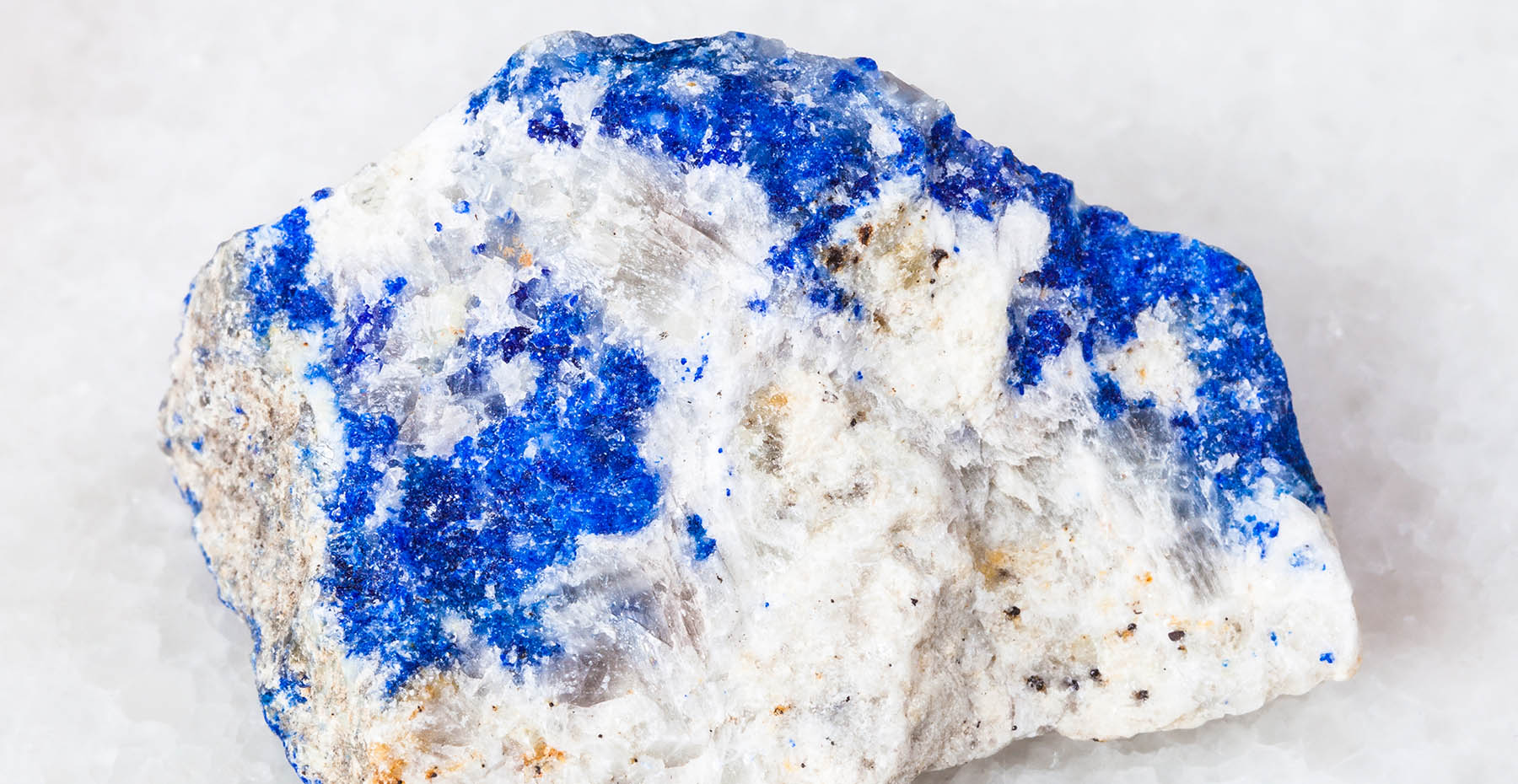

Birthstone for December (along with turquoise)
As early as 5000 years B.C., lapis lazuli (pronounced LA piss LA zoo lee) was mined in what is now Afghanistan. Rough lapis is shown above, and a piece of polished lapis to the left.
Lapis is Latin for “stone” and lazuli means blue. (The words azul and azure come from the same root.)
Lapis lazuli has all the qualities of a good gemstone: it takes a polish, is tough enough to wear, and has a beautiful color. You will also find lapis carved into animals, daggers, bookends, tiny bowls and boxes, among other shapes. It is lovely in inlays and mosaics.
 The funeral mask of Tutankhamun (King Tut) was embellished with lapis. To the ancient Egyptians, lapis was as valuable as gold.
The funeral mask of Tutankhamun (King Tut) was embellished with lapis. To the ancient Egyptians, lapis was as valuable as gold.
Lapis lazuli is mentioned in the Bible as one of the stones in the breastplate of judgment worn by Aaron.
 Ground lapis lazuli is called ultramarine, the most expensive of blue pigments. Used by Renaissance artists, it was used to confer special status on the central figures of a painting. That’s why you so often see the virgin Mary dressed in blue. Notably, Vermeer’s Girl with a Pearl Earring and Michelangelo’s Sistine Chapel were painted with natural ultramarine blue. Since the 19th century, ultramarine paint is made with a synthetic blue pigment.
Ground lapis lazuli is called ultramarine, the most expensive of blue pigments. Used by Renaissance artists, it was used to confer special status on the central figures of a painting. That’s why you so often see the virgin Mary dressed in blue. Notably, Vermeer’s Girl with a Pearl Earring and Michelangelo’s Sistine Chapel were painted with natural ultramarine blue. Since the 19th century, ultramarine paint is made with a synthetic blue pigment.
Lapis lazuli is a metamorphic rock containing deep blue lazurite, gold accents of pyrite, white calcite, and a few other minerals.
Afghanistan is still a major source of lapis lazuli, in addition to mines in Russia, Chile, Italy, Mongolia, the U.S., and Canada.
Lapis lazuli is associated with wisdom, strength, and power. Some believe it enhances truthfulness, mental clarity, and creativity.
